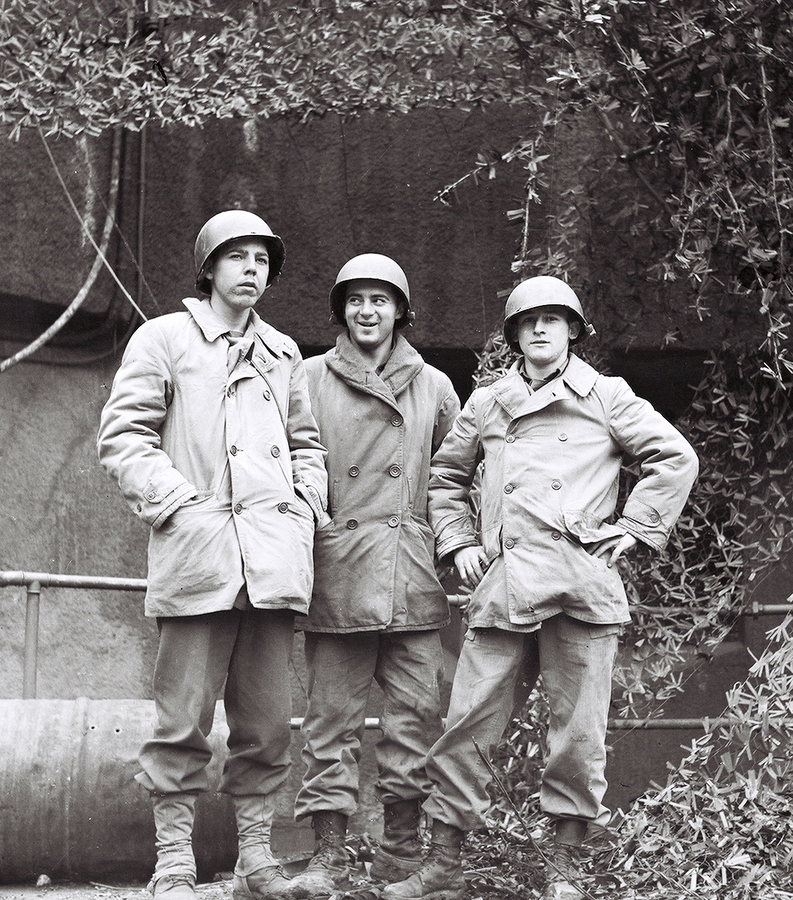Operation Brittany

Photo from the collection of Irving Mayer.
The tranquil life of La Fremonde was broken when the company was alerted on Aug. 9th. Trucks were soon loaded and the men piled on with enthusiasm; for the majority, it was their first mission. Each platoon was assigned to a different task force and moved out at a designated time.
As the first platoon’s vehicles swung past the C. P. word passed along the convoy that the men were going to act as infantry. This was an exciting rumor to those who did not realize that guard duty is considered infantry work rather than engineering.
Since there was no briefing before departure, the ultimate destination was unknown to the men. However, as a result of the morning orientations, they were familiar with the lay of the land and scanned with interest the wrecked towns while the task forces made their way through Countances and on toward Avranches.
Just before dusk and Avranches, the task forces pulled into bivouacs near Sartilly. Here “Ten and One” rations were broken open for supper and then the men bedded down for the night while the task force commanders awaited movement orders.
At 0500 10 Aug., the orders arrived. The men were called together and briefed. The military situation was that the Germans held-in-force the Normandy pocket, and the ports of St. Malo, Brest, Lorient and St. Naizzaire. Patrols of undetermined number operated throughout Brittany. Supplies were being sent to Brest and Lorient under armed guards.
The objective of “Operation Brittany” was to stop withdrawal of German units in the Normandy pocket by creating an impression that the U. S. Army was weakening its forces in front of the main battle positions and turning to clear the Brittany peninsula prior to a major push in Normandy.
To accomplish this deception, 23rd Hq. divided its organization into four task forces, each with a separate mission.